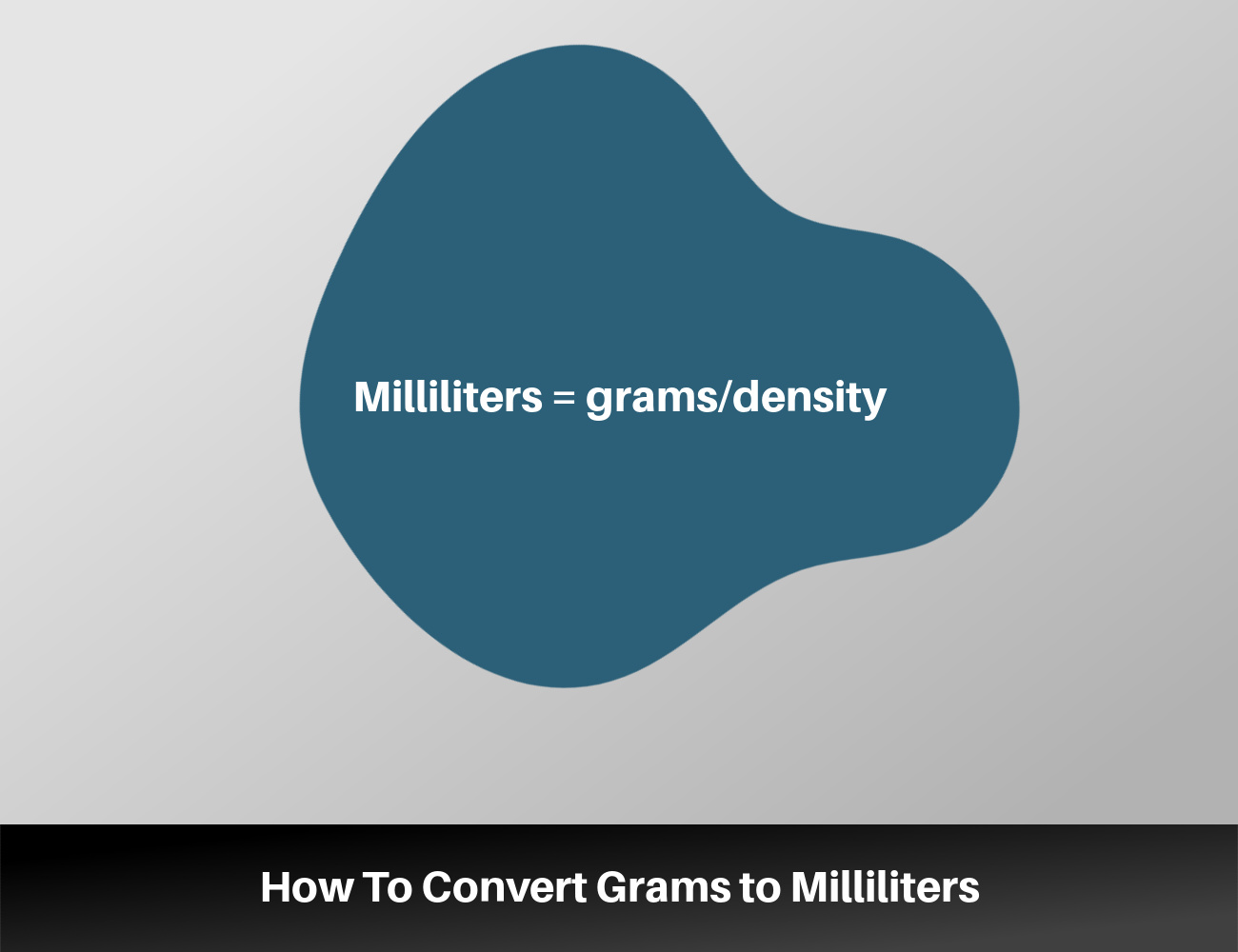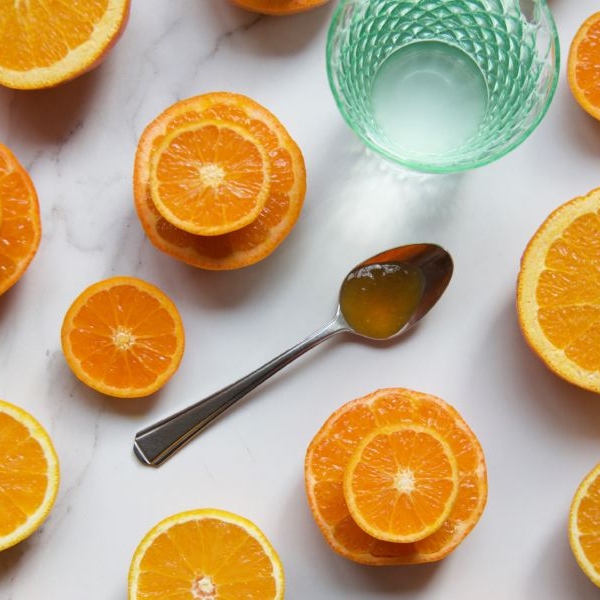Enter your grams value and select the density of the item you’re converting to reveal the equivalent in milliliters. We’ve also provided a grams-to-milliliters formula to make your own calculations.
Grams to Milliliters Converter
Enter the weight in grams and select the substance to calculate the equivalent volume in milliliters:
Since grams measure mass and milliliters measure volume, you can’t directly convert from one to the other. Instead, you must also know the density of the item you’re measuring in g/ml.

Milliliters = grams/density
If you’re measuring water, the density of water is 1 g/ml, so 1 ml equals 1 gram of water.
The Difference Between a Gram and a Milliliter
The gram (g) is a metric unit of mass, while the milliliter (ml) is a metric unit of volume. Mass measures the matter in an object, while volume measures the amount of space taken up in a 3-d object. A milliliter is a standard liquid measurement, while grams can measure liquids or dry ingredients.
A milliliter is equal to one-thousandth of a liter or a cubic centimeter. A gram is one one-thousandth of a kilogram.
| Grams (g) | Water (mL) | Olive Oil (mL) | Honey (mL) |
|---|---|---|---|
| 0.01 | 0.01 | 0.0092 | 0.0142 |
| 0.025 | 0.025 | 0.023 | 0.0355 |
| 0.06 | 0.06 | 0.0552 | 0.0852 |
| 0.1 | 0.1 | 0.092 | 0.142 |
| 0.15 | 0.15 | 0.138 | 0.213 |
| 0.4 | 0.4 | 0.368 | 0.568 |
| 0.5 | 0.5 | 0.46 | 0.71 |
| 0.7 | 0.7 | 0.644 | 0.994 |
| 1.5 | 1.5 | 1.38 | 2.13 |
| 2 | 2 | 1.84 | 2.84 |
| 2.5 | 2.5 | 2.3 | 3.55 |
| 3 | 3 | 2.76 | 4.26 |
| 4 | 4 | 3.68 | 5.68 |
| 5 | 5 | 4.6 | 7.1 |
| 6 | 6 | 5.52 | 8.52 |
| 7 | 7 | 6.44 | 9.94 |
| 8 | 8 | 7.36 | 11.36 |
| 8.4 | 8.4 | 7.728 | 11.988 |
| 25 | 25 | 23 | 35.5 |
| 28 | 28 | 25.76 | 39.76 |
| 28.3 | 28.3 | 26.036 | 40.246 |
| 40 | 40 | 36.8 | 56.8 |
| 50 | 50 | 46 | 71 |
| 70 | 70 | 64.4 | 99.4 |
| 75 | 75 | 69 | 106.5 |
| 100 | 100 | 92 | 142 |
| 112 | 112 | 103.04 | 159.04 |
| 113 | 113 | 103.96 | 160.66 |
| 120 | 120 | 110.4 | 170.4 |
| 125 | 125 | 115 | 177.5 |
| 130 | 130 | 119.6 | 184.6 |
| 170 | 170 | 156.4 | 241.4 |
| 180 | 180 | 165.6 | 255.6 |
| 250 | 250 | 230 | 355 |
| 600 | 600 | 552 | 852 |
| 800 | 800 | 736 | 1136 |
| 1000 | 1000 | 920 | 1420 |
| 1520 | 1520 | 1398.4 | 2122.4 |
How to Convert Grams to Milliliters: Step by Step
It may be necessary to convert from grams to milliliters in baking and scientific experiments. Still, because these units measure different things, you can’t convert between them without knowing the density.
First, determine the density of the item you’re measuring in g/ml. A quick Google search is often the best way to find this. Then, divide your grams value by the density to determine the equivalent amount of milliliters.
Here are some examples:
Example: Convert 50 grams of milk to milliliters
- Milk’s density is 1.03 g/ml
- Milliliters = 50 g/1.03 g/ml
- 48.54369 ml = 50 g
Example: Convert 500 grams of olive oil to milliliters
- The density of olive oil is 0.918 g/ml
- Milliliters = 500 g/0.915 g/ml
- 544.66231 milliliters = 500 grams
Example: Convert 40 grams of honey to milliliters
- The density of honey is 1.38 g/ml
- Milliliters = 40 g/1.38 g/ml
- 28.98551 milliliters = 40 grams
Frequently Asked Questions (FAQ)FAQ
Can you use a milliliter to measure dry ingredients?
While it’s best to use a milliliter to measure liquid ingredients, you can also use the ml to measure dry ingredients. For instance, many dry measuring cups are also marked in millimeters, with 1 U.S. cup equal to about 240 milliliters. In most cases, it’s best to measure dry ingredients by cups, ounces, or grams.
How many milliliters of sugar is one gram of sugar?
A single gram of granulated sugar is equal to 1.18 ml. The density of granulated sugar is 0.8453506 g/ml. You can divide grams by density to find the equivalent number of milliliters.
How many milliliters is one gram of butter?
There is 1.1 ml of butter in 1 gram of butter. The density of butter is 0.911 g/ml. To convert from grams to ml, divide your grams by the density of butter.
What’s one gram of salt to milliliters?
One gram of salt equals 0.78125 mL. The density of salt is 1.28 g/ml. You can figure milliliters by dividing your grams’ value by the density of salt.
What is 100 grams of almond flour to milliliters?
There are 246.45 milliliters of almond flour in 100 grams of almond flour.


